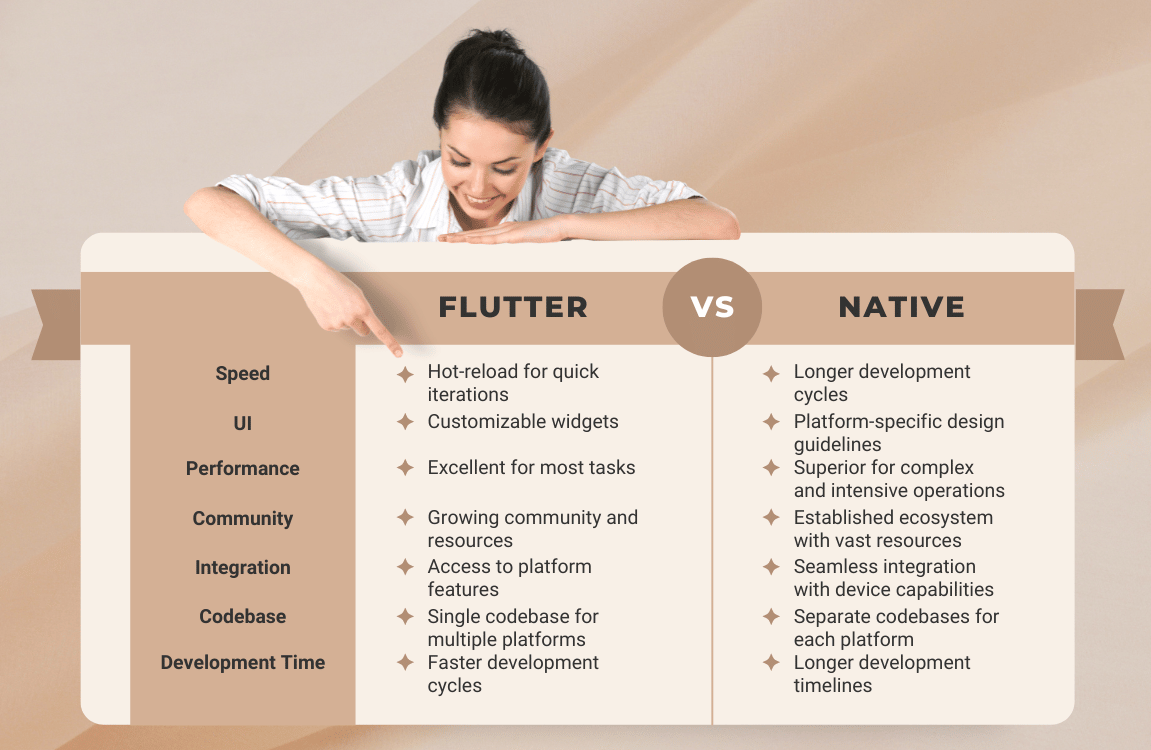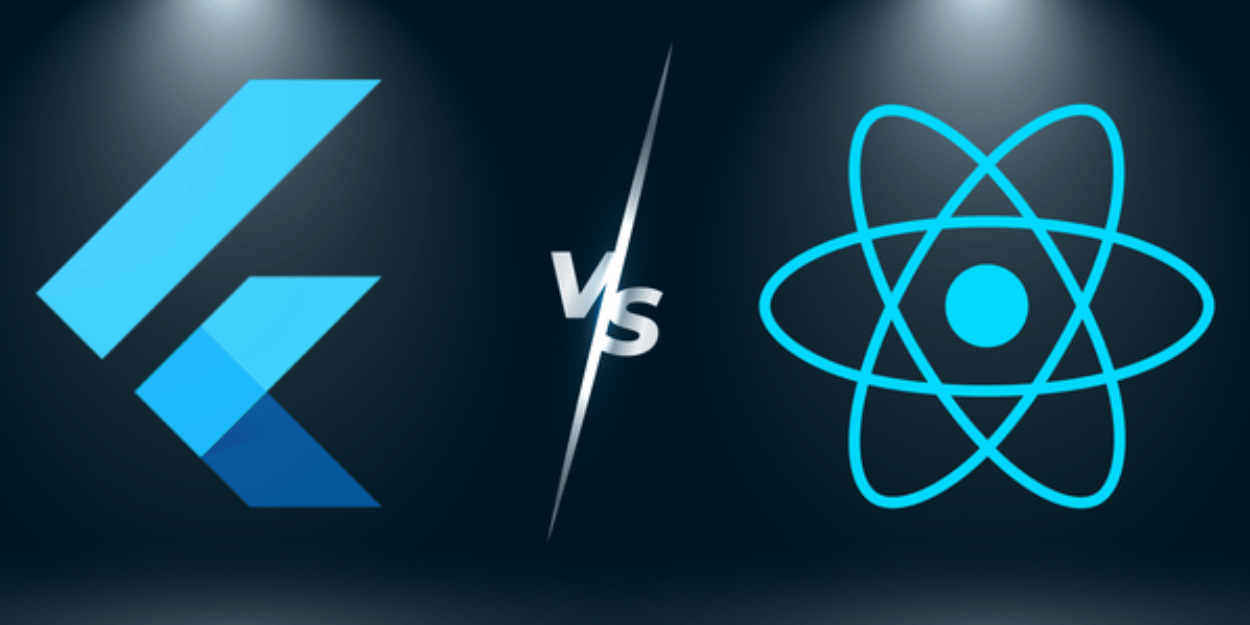Welcome to the exciting world of app development! Choosing the right technology stack is crucial when it comes to building your next app. In this article, we will explore the differences between Flutter vs Native development and help you make an informed decision. Whether you’re a developer, entrepreneur, or simply curious about app technologies, we’ve got you covered. So let’s dive in!
Understanding Flutter and Native Development
Flutter Development
- Flutter is an open-source UI toolkit developed by Google that allows developers to build high-quality native apps for iOS, Android, and the web from a single codebase.
- It uses the Dart programming language and provides a rich set of pre-designed widgets, offering a fast and visually appealing user interface.
Native Development
- Native development involves building separate apps using platform-specific programming languages like Swift for iOS and Kotlin or Java for Android.
- It provides access to all native APIs and functionalities, allowing for maximum control over app performance and user experience.
The Pros and Cons of Flutter Development
Speedy Development
- Flutter offers hot-reload functionality, allowing developers to see changes in real time, speeding up the development and testing process.
- The ability to build a single codebase for multiple platforms reduces development time and effort.
Beautiful UI
- Flutter’s extensive widget library and customizable UI elements enable developers to create visually stunning and consistent user interfaces across platforms.
- The framework provides a rich set of material design and Cupertino-style widgets for Android and iOS respectively.
Performance
- Flutter utilizes a rendering engine that directly generates compiled machine code, resulting in excellent app performance.
- However, certain complex and computationally intensive tasks may experience performance bottlenecks compared to native development.
Community and Ecosystem
- Flutter has a growing and enthusiastic community of developers, offering ample resources, libraries, and packages.
- However, the ecosystem is still evolving, and certain niche functionalities or specific platform features may require custom implementations.
The Pros and Cons of Native Development
Maximum Platform Integration
- Native development provides access to all platform-specific APIs and functionalities, allowing for seamless integration with device features.
- It ensures that the app adheres to platform-specific design guidelines, resulting in a highly polished and familiar user experience.
Performance Optimization
- Native apps have direct access to device-specific hardware and software optimizations, offering superior performance for complex and resource-intensive tasks.
- However, developing and optimizing separate codebases for each platform can be time-consuming and increase development costs.
Mature Ecosystem
- Native development has been around for a long time, resulting in a mature ecosystem with a vast array of libraries, tools, and resources.
- The availability of third-party libraries and plugins facilitates rapid development and integration of advanced functionalities.
Code Reusability Challenges
- Building separate native apps for iOS and Android requires maintaining two codebases, increasing development and maintenance efforts.
- Cross-platform code-sharing approaches like Kotlin Multiplatform or Swift’s SwiftUI are still evolving and may have limitations.
Flutter vs. Native: A Comparison
To help you make an informed decision, let’s compare Flutter and Native development in a concise table format:

Practical Examples
Google Ads App
- Google Ads, a widely-used advertising platform, developed its mobile app using Flutter.
- By choosing Flutter, Google was able to maintain a consistent user experience across both Android and iOS platforms while reducing development time and costs.
- The app showcases Flutter’s capabilities in creating a visually appealing and performant user interface.
- Instagram, a popular social media platform, opted for native development with separate iOS and Android apps.
- By building natively, Instagram leveraged the platform-specific APIs and features to deliver a seamless and optimized user experience on each platform.
- The app takes advantage of the unique functionalities provided by iOS and Android, such as camera access and push notifications.
Reflectly
- Reflectly, a mindfulness and journaling app, chose Flutter for its cross-platform development.
- By utilizing Flutter, Reflectly was able to deliver a visually stunning and interactive user interface across iOS, Android, and the web.
- The app’s smooth animations and customizable widgets demonstrate the power of Flutter in creating engaging user experiences.
Uber
- Uber, the renowned ride-sharing service, opted for native development to ensure maximum performance and integration with device features.
- By building separate apps for iOS and Android, Uber leveraged platform-specific capabilities such as location services, maps, and payment integrations.
- The native approach allowed Uber to provide a seamless and reliable service tailored to each platform’s requirements.
Making the Right Choice
When choosing between Flutter and Native development for your next app, consider the following factors:
App Complexity and Performance
- If your app requires complex operations or resource-intensive tasks, native development may offer better performance and control.
- For simpler apps or rapid prototyping, Flutter’s speed and ease of development can be advantageous.
User Experience and Design
- Consider the importance of adhering to platform-specific design guidelines and providing a familiar user experience.
- Native development excels in offering a polished UI/UX consistent with the platform, while Flutter provides customizable widgets and a visually appealing interface.
Development Resources and Timeline
- Evaluate the availability of resources, community support, and the time constraints of your project.
- Flutter’s growing community and speedy development capabilities may be beneficial for projects with tight deadlines or resource limitations.
Conclusion
Choosing between Flutter and Native development depends on various factors such as app complexity, performance requirements, and development resources. Assessing these factors alongside your project goals and timeline will help you make an informed decision.
Remember, both Flutter and Native Development have their strengths and weaknesses. By understanding the differences and considering your specific needs, you can embark on the right path to build your next remarkable app.
Happy coding!




